What are Some Science Activities to Use During Elaborate 5E?
What are some science activities you can assign that are meaningful, engaging, and grow students’ brains? This is what Elaborate is all about! It’s time to have students practice and expand on what you taught them in Explain.
In This Post
We will discuss what Elaborate is in a 5E unit. I will share different types of science activities and routines for middle schoolers that can be used during Elaborate.
Be sure to get your guide 5 Daily Must-Do Routines to Run Your Classroom Like a Pro! This will lend a helping hand to manage your classroom consistently and when you are planning your science activities! Get it here –click on this link for the guide!
Disclosure: This post contains some affiliate links for your convenience. As an Amazon Associate I earn from qualifying purchases with no cost to you.
What is 5 E?
We have been exploring the 5E Model for our Science units. There are 5 steps- Engage, Explore, Explain, Elaborate, and Evaluate. You can read the overview here, or scroll down to find all of the links to the blog posts about 5E.
Elaborate is the time when students apply the skills and concepts that they have learned. They will use the vocabulary, clear up any misconceptions, analyze models or claims, explain or argue their claims and reasoning, and communicate to others.
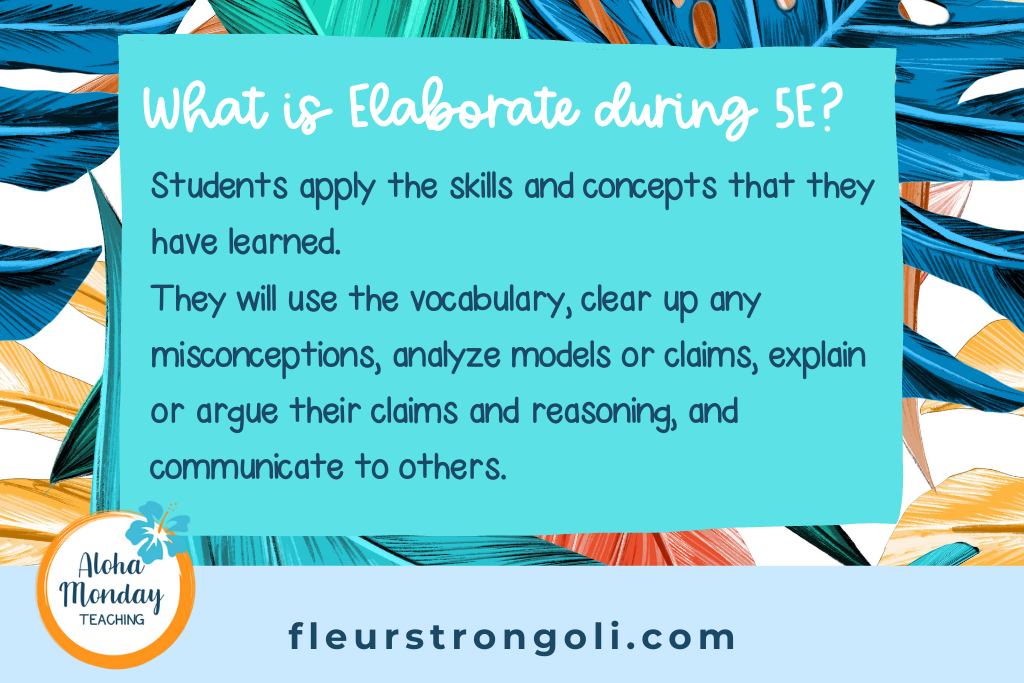
What are some science activities?
First things first, let’s talk about the brain during the Elaborate step. So far, the brain has been engaged and been given information about a new concept. Now it’s time to strengthen those neural links. This is done through repeated, deliberate practice. The work has to be meaningful. There are activities that are useful to help the brain make stronger neural links, moving into long term memory.
If you want your students to learn vocabulary or parts of the digestive system, they should have deliberate practice. Ways you can accomplish this is through your bell work, activities during independent work, and homework.
You should also incorporate the different learning styles or intelligences to help the brain make stronger neural connections and keep students engaged in their learning. Left brain learners may prefer activities such as drawing, creating models, and moving around or using hands-on learning. Right brain learners may lean more towards activities including writing, reading, speaking, or finding logic in concepts. Use this information to create activities and assignments for your students during Elaborate.
Read more about engaging students in your lessons in this blog post.
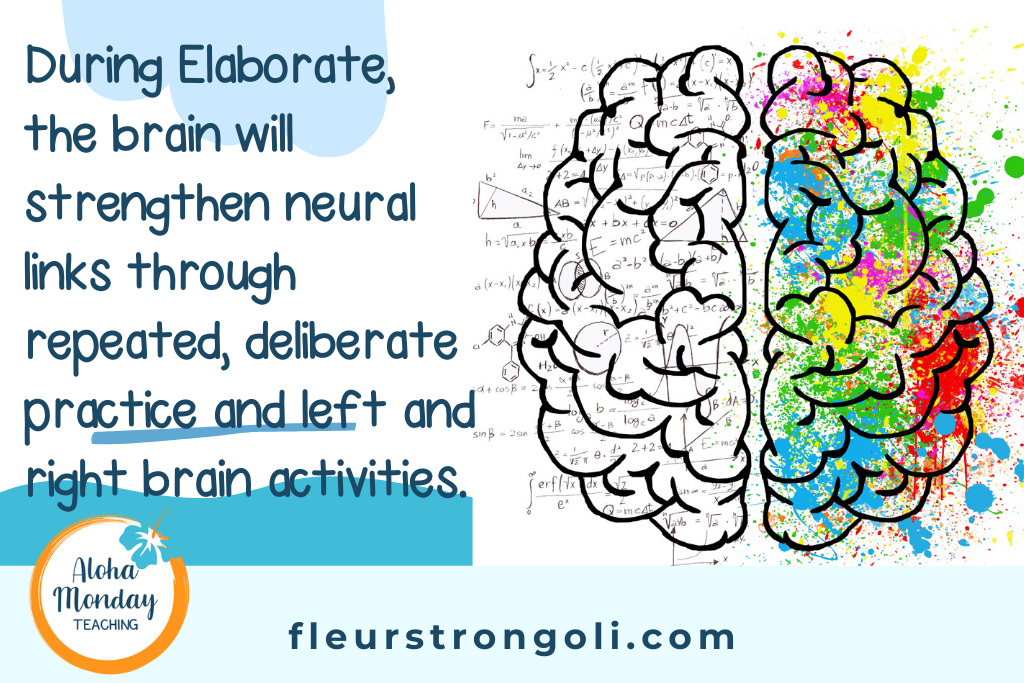
Here are more ideas and ways to incorporate it into your unit plan.
Science Projects that are Easy (for you & the kids)
There are several ways to use science projects, investigations, or labs. These ideas are easy for you to set up and manage and for kids to complete.
Projects
This is also a perfect time to offer students some project choices, or have a project that you’d like the whole class to complete.
If offering a choice, be sure to incorporate various learning styles. Some ideas include writing a newspaper article, performing a skit, creating a model, or writing a song about the concept.
Continuing an Investigation
During Explore, you may have had students begin an investigation. Here, students will apply what they learned during Explain, and continue their learning, analyzing, and communicating. You might provide more information like models, data, or articles. Students can write their claims, present to others, and share their reasoning whether they agree or not.
Science Labs
Students love doing labs in class and Elaborate is another perfect time for this. Choose one or more labs that go with the unit you are teaching. Decide if you want it to be a teacher-led lab or a student-led lab. You can look back at the blog post about Explore for more lab ideas.
During a teacher-led lab, I go over the lab, questions, and procedure with the students. Then they write their hypothesis and share it with the class. The materials are usually set up at lab stations, or they are in one common place so students can get them. I have roles for each student in the groups so they know what to do. It also helps students stay accountable for doing their share in the lab and prevents one person from taking over in the group.
Students go through the lab simultaneously while making connections to the concept they learned. At the end of the lab, we discuss and clear up any misconceptions.
Student-Led Labs
Now that students have a better understanding of the concept, let them conduct their own lab to demonstrate learning and clear up any misconceptions. This looks similar to a teacher-led lab, but your role here is to guide them through this investigation. Share with the students the materials you’ve provided and the parameters. They should know what concept they are exploring, which will guide them in their investigation.
Groups should discuss and formulate a hypothesis. Then allow students to work through the Scientific Method to conduct the lab. At the end of the lab, have students discuss their new understanding and clear up any misconceptions.
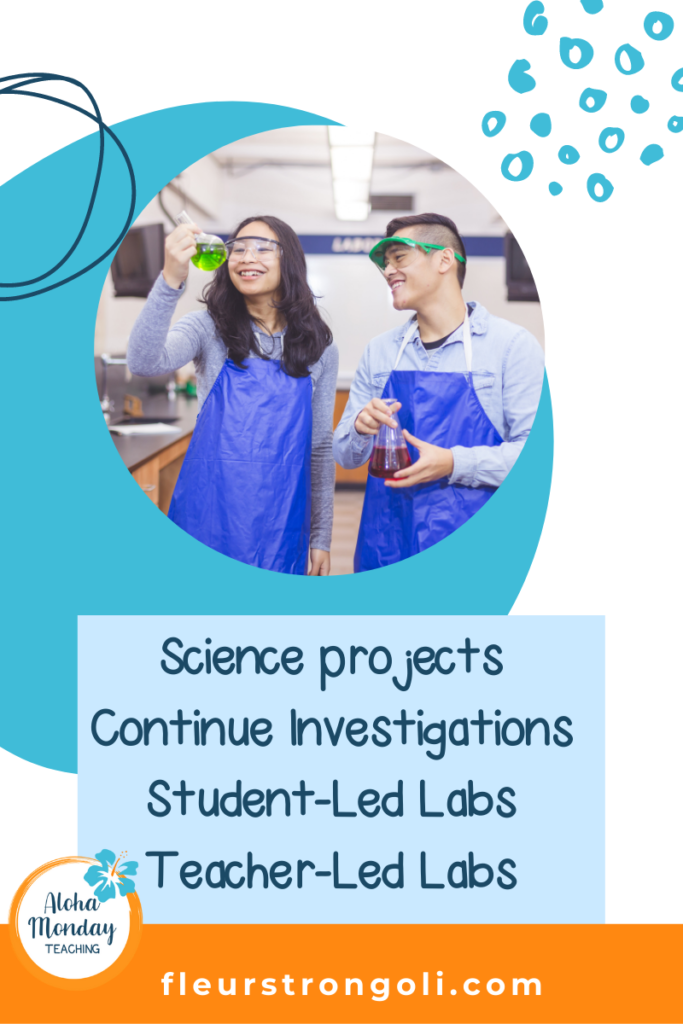
Choice Boards in the Classroom and Science Learning Stations
I love using choice boards and stations in class! It’s a win-win for me and the kids. Students are engaged in various tasks, I have them doing deliberate and repeated practice (growing their brains), and I am able to monitor, work with individual students, or work with small groups of students to clear up any misconceptions and to continue teaching them.
Activities for Choice Boards and Stations
When I use choice boards or stations, I plan for the different learning styles of my students. I like to have at least one illustrating or creating activity, such as illustrate a body system or create a model of an ecosystem. Other activities I make sure to have are vocabulary practice, reading passages and comprehension questions, and a data analysis or graphing activity. Task cards and sorting activities are great in stations or on a choice board. Students are receiving that repeated and deliberate practice.
How to Manage Choice Boards or Stations
When you use choice boards, students are able to select which tasks to complete. During stations, you set up your activities (such as a Reading Station, Math in Science Station, Lab or Create a Model Station, Vocabulary Station, Computer station, etc.) and students rotate through each one. I also like to have a list of tasks to complete first, then give a list of optional activities if they have time.
When using choice boards or stations, plan for students to work on tasks for at least two class periods. In my classes, students usually visit two or three stations a class period. With choice boards, they might complete two activities a class period.
You can read more about planning, preparing, and managing choice boards in this blog post.
And check out this blog post to learn about planning, preparing, and managing stations.
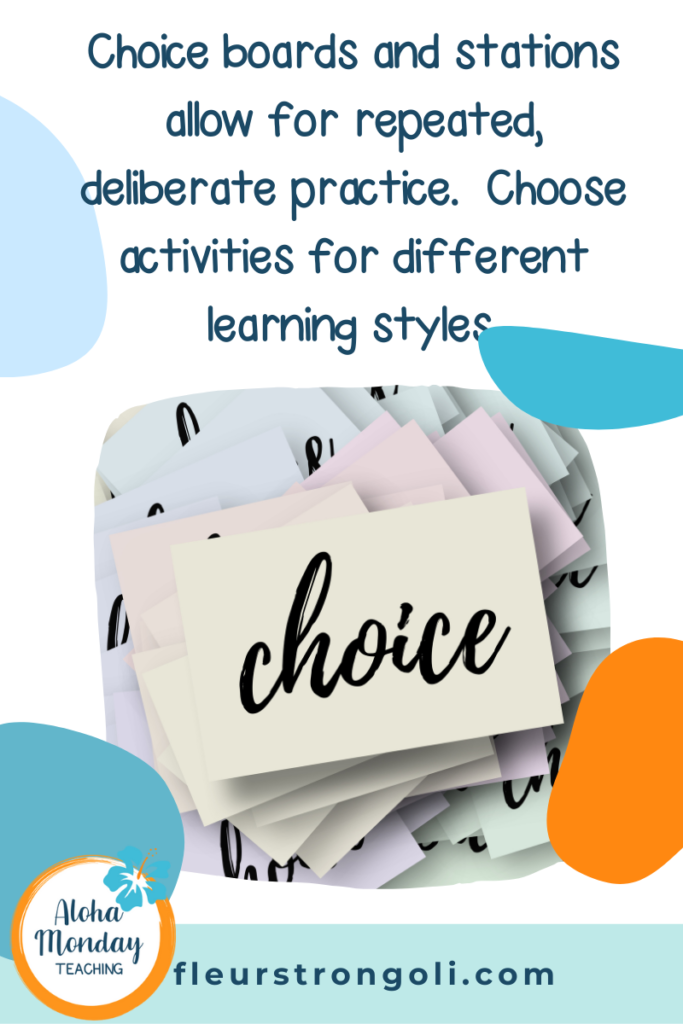
Wrap Up
Elaborate in a 5E Model is when students apply what they have learned, continue asking and answering questions. They will use the vocabulary, clear up any misconceptions, analyze models or claims, explain or argue their claims and reasoning, and communicate to others. There are many ways to give students room to do all of these things. They can complete projects, investigations, labs, choice boards, or stations.
Read More & Resources
5 Daily Must-Do Routines to Run Your Classroom Like a Pro
How Do I Make Lesson Planning of Science Simple and Focused? (5E overview)
What are Quick and Easy Lesson Plan Hook Ideas for Science? (5E Engage)
5E Explore: 4 Types of Fun Activities and Science Experiments for Middle Schoolers
3 Must-Haves for a Successful Explain 5E Model
3 Important Steps to Engage Students in Lessons
How Do I Use Choice Boards in the Classroom So They Are Effective?
How Do You Manage and Use Science Stations in the Classroom Effectively?
Aloha Monday Teaching on Teachers Pay Teachers
Your Turn!
How will you allow students to apply what they have learned during Elaborate? What will you try?
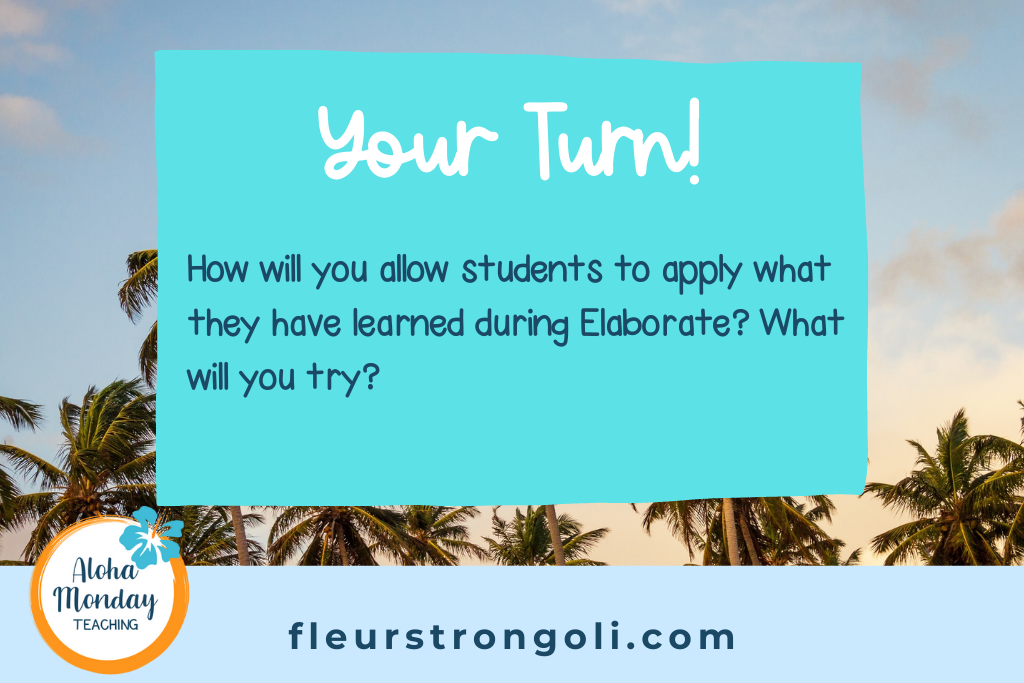

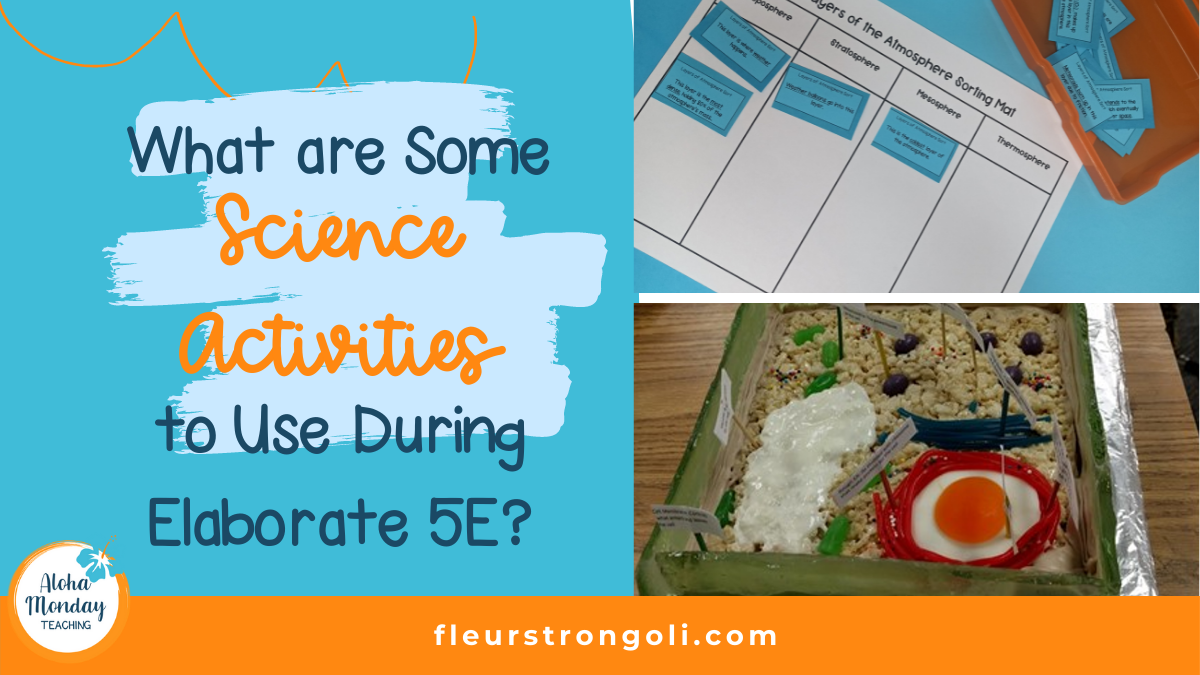
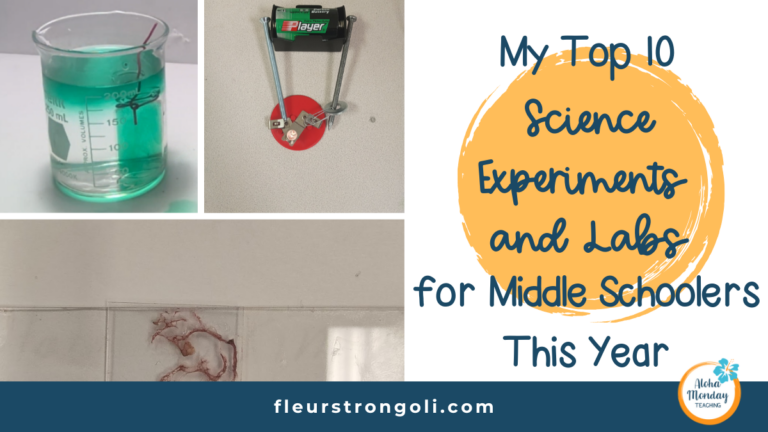
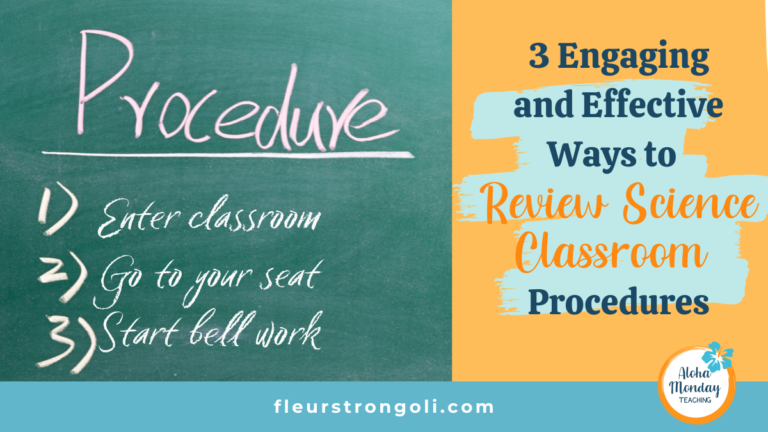

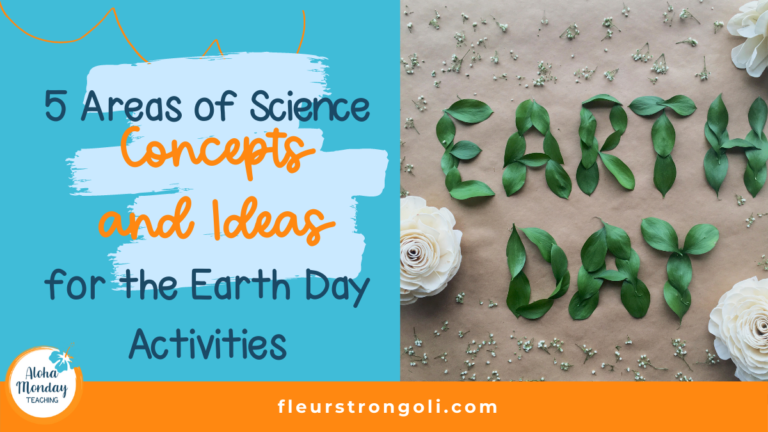
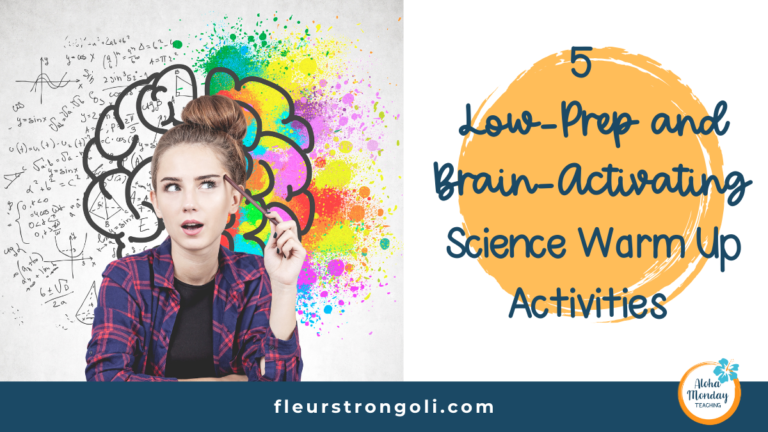
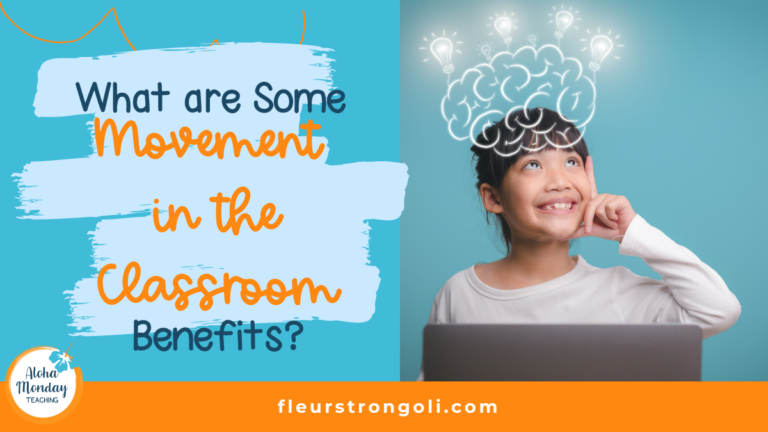
I love the idea of giving students choices. Thank you for sharing some strategies for personalizing our learners’ education.